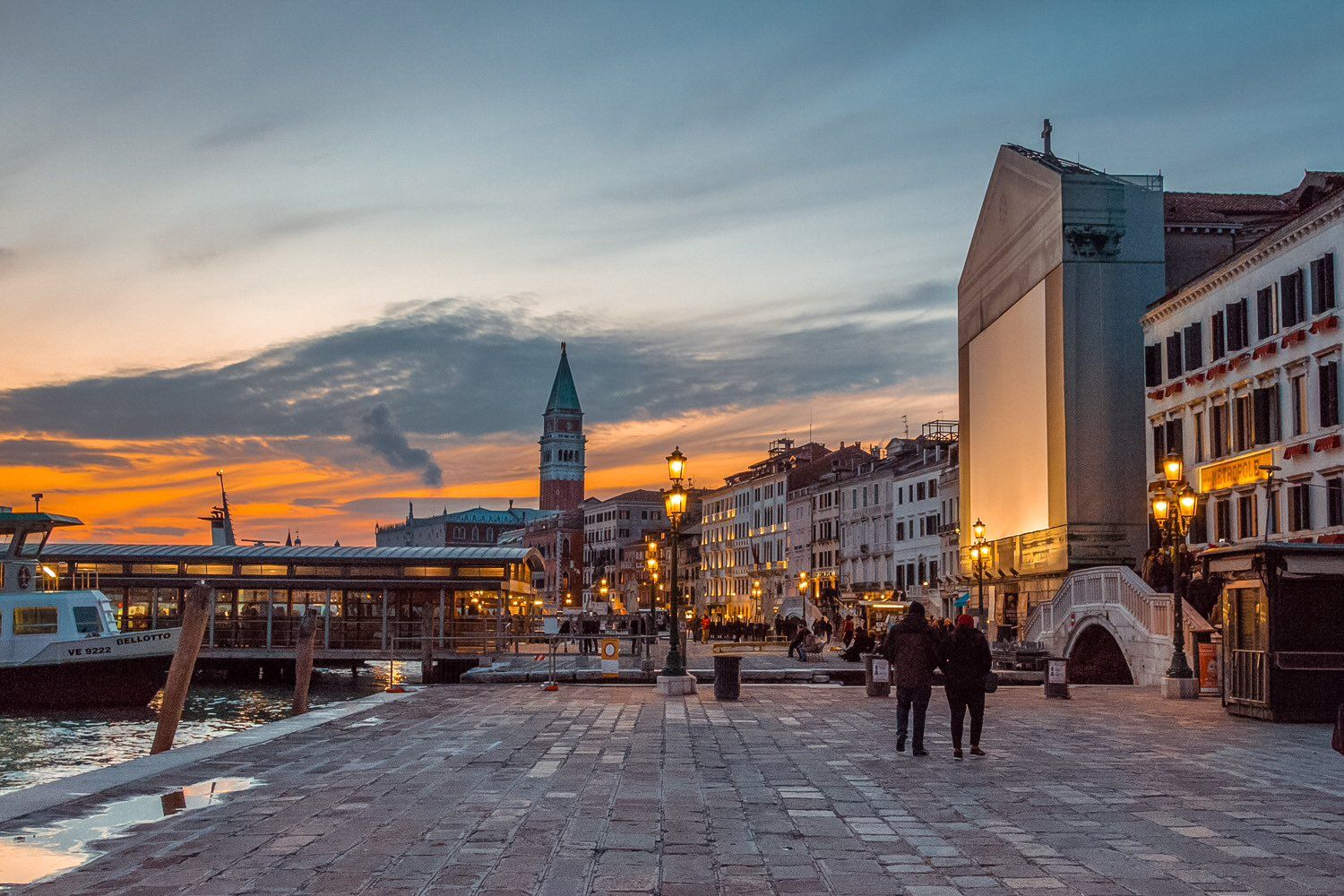You are walking along the Riva degli Schiavoni, the Embankment of the Slaves, which refers to the Slavic merchants from the Balcan countries who worked here when Venice was at its peak; until 300 years ago you would have seen many merchant ships from the Balcan lands dock right here, and you would have been surrounded by people busily laying off fresh merchandise onto the land. This, along with much else, all stopped in the early 19th century with Napoleon’s take over of the city.
And soon after, with the unification of Italy in 1861, Venice became part of the Italian kingdom, although Venice was actually annexed as last in 1866 under somewhat forced conditions. In any case, you’ll see the statue of King Vittorio Emanuele the second, the first Italian king, known as “the gentleman king” for his honest and just personality.
On one side of the statue base is a woman representing Venice defeated, with the winged Lion gnawing at the chains symbolising the Austrian rule, and on the other the same figures now triumphant under Italy’s rule.






